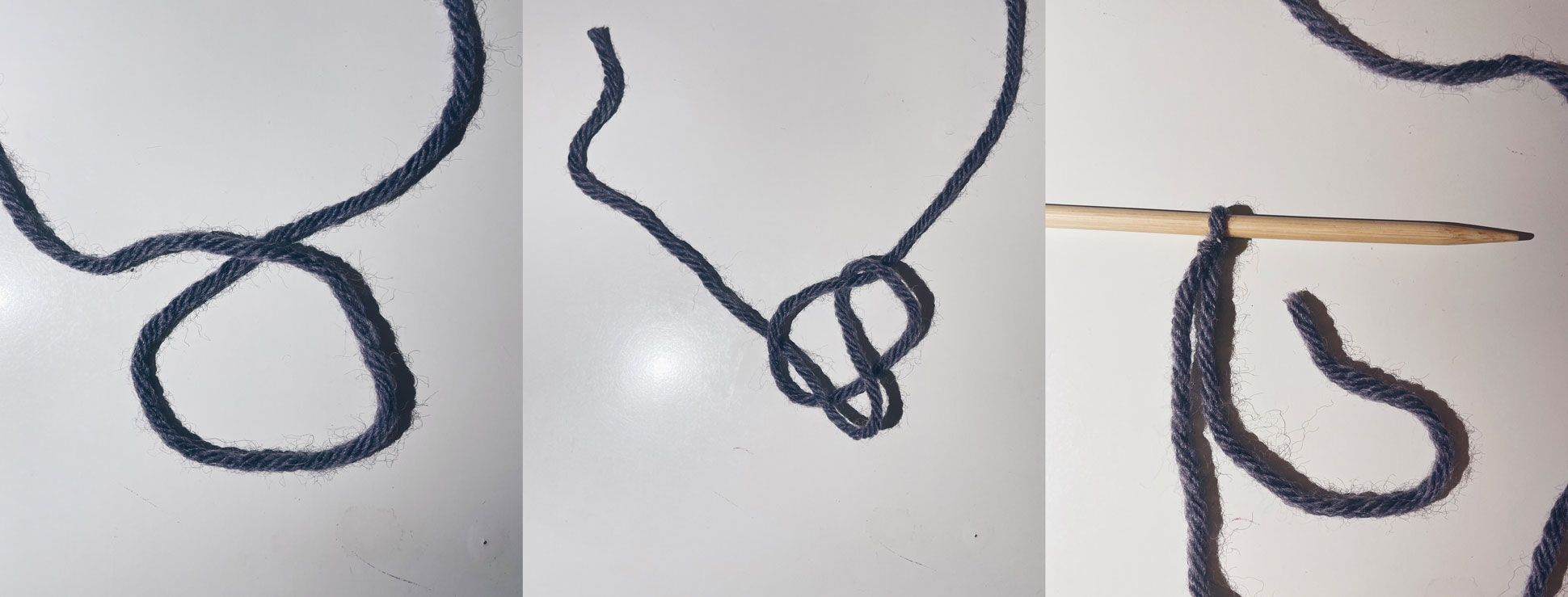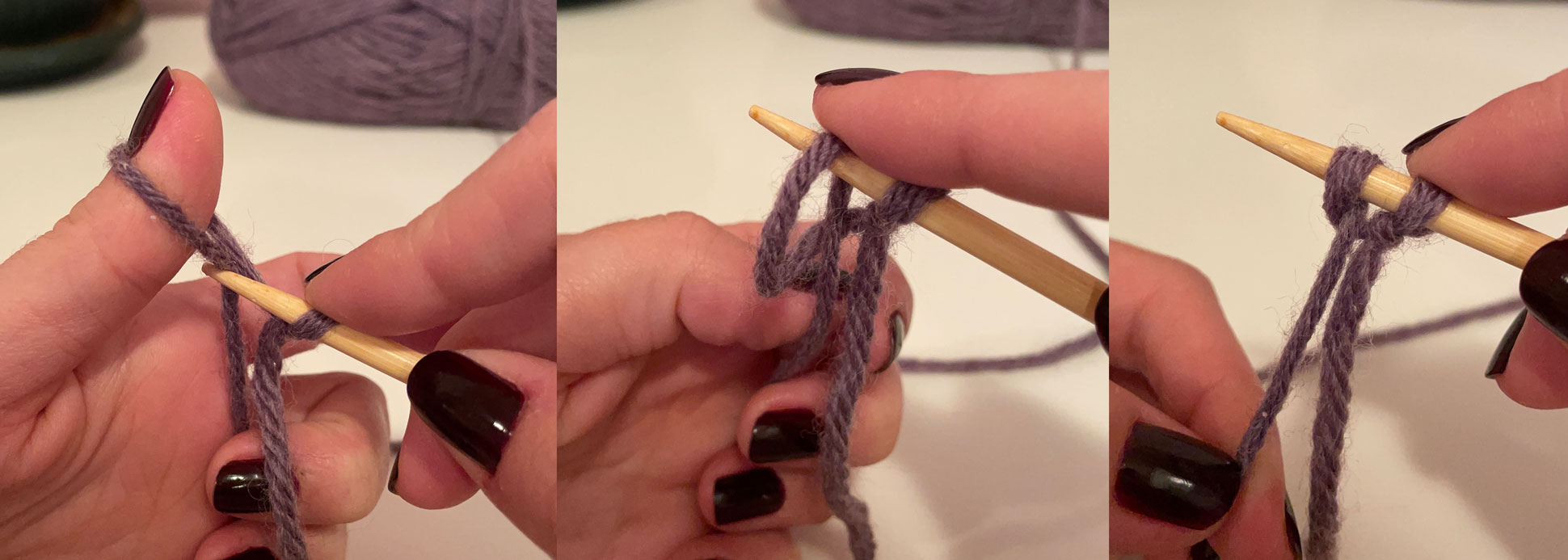The single cast-on method is also known by various alternative names, and synonyms for this technique include simple cast on, knit cast on, backward loop cast on, thumb cast on, etc. These terms may be used interchangeably depending on the knitting community or the specific instructions provided in a pattern.
The single cast on is one of the easiest ways of casting on and can be used anywhere in your project. For example, you can cast on a couple of more stitches in the middle of your knitting.
Every cast on creates either knit or purl stitches, or serves as the foundation for them. In this explanation, I’ll cover the techniques for single cast on, both knitwise and purlwise.
Single cast on knitwise
Like most cast-on techniques you start with a simple slipknot.

After you have a slipknot on your needle, you wrap the yarn clockwise around your thumb, and slip that loop to your knitting needle. Tighten it up lightly. Repeat this process until you have the desired number of stitches on your needle. See video on Instagram.

Single cast on purlwise
After a slipknot, you wrap the yarn around the thumb counterclockwise and pick up the stitch from behind. See video on Instagram.

Conclusion
First row is easy to cast on, but when you get to the second row it can be difficult to enter the stitches. It helps if you knit close to the tip and try not to tighten up too much when you cast on.
If you combine knitwise and purlwise cast on stitches, you can create the foundation for a rib stitch. For a 1×1 (or 2×2) rib stitch, knit one (or two) stitches knitwise and one (or two) stitches purlwise, repeat this process until the desired length is achieved.
Happy knitting!